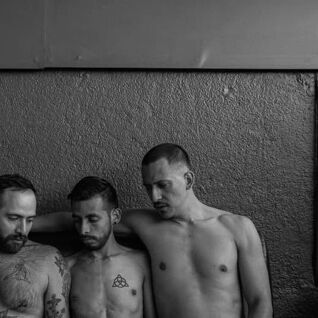
Freddie Mercury remains one of rock’s most beloved figures. The lead singer of Queen died in 1990 from AIDS-related illness.
Anyone who saw the Oscar-winning, 2018 biopic, Bohemian Rhapsody (starring Rami Malek as Mercury), will know about Mercury’s background. Born Farrokh Bulsara in Zanzibar in 1946, he and his parents emigrated to England in 1964. The family settled in a modest home in Feltham, on the western outskirts of London.
It was here that the young rock icon, already calling himself Freddie, dreamt of rock stardom. After college, he earned a living by selling clothes at London’s Kensington Market alongside a friend, Roger Taylor. He also briefly working as a baggage handler at Heathrow Airport.
Related: About that time Jim Hutton turned down Freddie Mercury…
Taylor played the drums, and in 1970, he and guitarist Brian May invited Freddie to become the singer in their band, Smile. With the addition of bass player John Deacon, the band became Queen – with Freddie adopting the surname Mercury. It was at this point that he fully moved out of the family home.

The band went on to have their first big hit in the UK 1974 with Seven Seas of Rhye, before the release of the groundbreaking song ‘Bohemian Rhapsody’ in 1975 brought them worldwide fame.
Mercury has a long-running relationship in the early 1970s with a woman, Mary Austin, but this ended when he revealed to her that he was also attracted to men.
Publicly, he never clarified his sexuality. He kept his affairs with men secret from the public – despite adopting a leather clone look in the late 1970s so popular with many gay men of the time. In the 1980s, he avoided commenting about his health, despite showing signs of dramatic weight loss (a common symptom of untreated HIV infection).
He wouldn’t confirm that his HIV status until just a couple of days before his death, at the age of 45.
Related: Gay bars in London
History preservation organization English Heritage erected a blue plaque on Mercury’s home in 2016. It coincided with what would have been his 70th birthday. It can be found at 22 Gladstone Avenue, Feltham, London, TW14 9LL
As a private residence, however, the public is not allowed inside.
Find out more about #FreddieMercury and his new #blueplaque in #Feltham! https://t.co/Do8MwAEnnV pic.twitter.com/Q3HThoy3QG
— English Heritage (@EnglishHeritage) September 1, 2016
English Heritage has erected blue plaques on the homes of several other notable LGBTQ figures, including the actors John Gielgud (at 16 Cowley Street, Westminster SW1P 3LZ) and Kenneth Williams (Farley Court, Allsop Place, Marylebone, NW1 5LG) and novelists EM Forster (Arlington Park Mansions, Sutton Lane, Turnham Green, W4 4HE) and Vita Sackville-West (182 Ebury Street, Belgravia, SW1W 8UP).
When in London, fans of 1970s rock might also want to check out the plaque at 23 Heddon Street in central London, commemorating where David Bowie posed for his Ziggy Stardust album cover, and the Bowie mural in Brixton, south London (where the young Bowie spent much of his childhood).
Related: Check out London’s monument to the late, great Oscar Wilde

























